Radko Tichavsky is a Czech born Mexican Agrohomeopath. He is a co-founder and director of Instituto Comenius in Mexico and author of Handbook of Agrohomeopathy, 2007 (Spanish) and Homeopathy for Plants, 2009 (Spanish), Organon de la Holohomeopatía and creator and teacher of Holohomeopathy.
He is now offering a one-semester virtual course in Holohomeopathy (in English). You can learn how to define and analyze holons and how to repertorize the specific homeopathic treatment beyond just disease or pest names. You can find out more here: www.icomenius.edu.mx
NEW BOOK:
Organon de la Holohomeopatía

Dear Mr. Tichavsky,
Our Broccoli plants this year were ravaged by little green worms that ate most of the leaves (photo below). Is there any way to save the plants? Also, if we plant more, how can we avoid the worm damage? We’re in Medford Lakes, New Jersey (U.S.). It’s a moderate climate but this summer has been hotter (up to 90F) but plenty of rain. The zipcode is 08055.
Thank you
Patricia
Radko Tichavsky:
Dear Patricia,
There are many species of green larvae that attack broccoli crops (Trichoplusia ni, or Hellula phidilealis for example), all are butterfly larvae and are soft-bodied, and all are very susceptible to entomopathogenic fungi such as Bauveria bassiana or entomopathogenic bacteria such as Bacillus thuringuensis.
Knowing which plants are metabolically similar to broccoli and at the same time contain the bacterium Bacillus thuringuensis as endophyte (it lives inside the sap of some plants), it is easy to prepare a remedy and keep the culture free of the larvae of these lepidoptera.
In this case you can use for example Aloe vera (leaf gel) or Curcuma longa (the rhizome of curcuma) as sources of the live bionosode of Bacillus thuringuensis.
First cut a leaf of Aloe vera from the outside with water, then with alcohol at 30% and then again in water, open the leaf with a knife, wash the yellow liquid with water, release the gel with a spoon and blend it in the blender.
Cook a medium sized potato, let it cool down, remove the peel, and blend the potato with a little tap water, add the Aloe vera gel and leave it at room temperature for one day. Then dilute this liquid in a ratio of 1:100 and make 500 vigorous turns (or if the volume is large then 500 turns with a stick to the right and left) and apply in the form of a spray to the crops infected with the worms. In this way they will be infected with the bacteria and leave your culture completely clean.
In the case of using Curcuma longa the procedure is similar. You clean the rhizome with a brush under water, then rinse with 30% alcohol and then with water to eliminate the microorganisms adhered to the outside, and follow the same procedure above. Applications can be repeated once a month.
Dear Radko,
We’re having two problems with our cucumber vines. Some of the vines suddenly wilt and die, even though they’re getting plenty of water. Also, the plants have lots of leaves and plenty of flowers, but there are no cucumbers growing. (photos below)
Wilted vines on cucumber plant
Thank you
Bernadette Miller
Radko Tichavsky:
Dear Bernadette,
The death of cucumber plants may be due to Fusarium oxysporum. The plants seem to be dehydrated in spite of having enough water. You can apply Salix babylonica 3 JT alternating with Equisetum arvense 3 JT elaborated from the tea of both plants, then dilute in a ratio of 1:100 and make vigorous 500 turns, repeat this proceeding 3 times and you will get the potency 3 JT
As far as flower formation in cucumbers is concerned, long days and high temperatures stimulate the formation of male flowers, while female flowers are produced under short day and low-temperature conditions
The increase of abscisic acid (ABA) or low temperature increase female flowers (those that give fruits). Hight temperature and much light produce male flowers.
Enhancement of cucumber femaleness is induced by elevated levels of glucose and sucrose in shoot apices through a complex sugar-signaling pathway connected with hexokinase, a sugar sensor in the cucumber. The application of exogenous brassinosteroids also increases femaleness in cucumbers and a high auxin (IAA) level and external auxin applications also have the similar effect.
To increase the flowering you can apply TM made from avocado fruits dynamizated to potency 6 JT (it contains ABA), combined with any source of sucrose, for example Ficus carica fruit or date palm fruits at the same potency. Also, applications of Equisetum arvense 6 JT (contains brassinosteroids) induce the formation of flowers in cucumber and in the same moment serves to protect the plants against pathogenic fungus like Fusarium oxysoporum.
Good day Mr. Tichavsky,
I am writing to inquire if you might have thoughts about treating an invasive plant species that we are struggling with in Edmonton, Canada. Much of our city is overrun with Campanula rapunculoides or Creeping Bell Flower. It’s very prevalent in North America, and is terribly difficult to deal with. Zip code T5A 0A9. In the summer, temperatures range from 42F to 72F. We get an average of 365.7 millimetres (14.40 inches) of rain.
Thank you
Lyn Hirthe
Edmonton, Alberta Canada
Radko Tichavsky:
Dear Lyn,
Campanula rapunculoides or Creeping bellflower, is listed as an invasive species for many areas of North America. It is native to Europe and Western Siberia, where it is also grown as a popular ornamental plant.
Each case of non-native species introduction has different consequences and warrants specific evaluation to comprehend evolutionary dynamics and interactions in the local holon. To remedy the situation, we need to understand the reasons for an organism to become “invasive”: climatic changes, anthropogenic factors, and lack of natural enemies of the exotic species introduced to the holon.
It takes time for the holon to rebalance, especially in cases like C. rapunculoides, which happens to be a robust perennial adaptable to a large variety of habitats, and capable of propagating both by seeds and by rhizomatous roots. Using herbicides in this situation will not only damage the holon, but might elicit the opposite effect producing an herbicide-resistant strain.
In Europe C. rapunculoides is highly valued as a medicinal and edible plant, and in some areas is included in the Red List of Threatened Species. Its flowers, young leaves and shoots can be used in salads, as well as steamed or boiled; roots are also edible, and are very palatable and have a nutty taste. Therefore, it might be a sound idea to introduce it to some local foraging groups, of which there are plenty in your area.
rapunculoidesis also used to boost milk production in cattle and horses. A similar idea has been already put to work in Alberta (goats in Edmonton parks to graze on weeds “as herbicide alternative”), so using horses or cattle to graze on the plant might be a better alternative to herbicides.
Holohomeopathic strategies include: bionosode of pathogenic fungi; bionosode of bacteria that can degrade metabolic defenses of the plant and counteract the mutualist fungi; homeopathic preparations of allelopathic native plants.
While going on foraging trips, look for some of the potential fungal pathogens that cause diseases in other Campanula species. Four known diseases caused by
Ascomycete fungi affect C. rapunculoides: Golovinomyces orontii (powdery mildew), Coleosporium campanulae (leaf chlorosis followed by rust), Alternania alternata (leaf spot) and Rhizoctonia solani (basal rot, root rot).
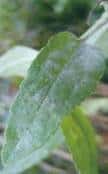 |
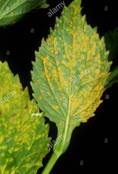 |
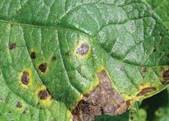 |
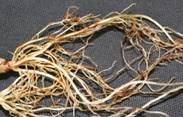 |
| Golovinomyces orontii (powdery mildew) | Coleosporium campanulae (rust) | Alternania alternata
(leaf spot) |
Rhizoctonia solani (root rot) |
Collect affected leaves or roots. If using rust-affected leaves, you can just wash the rust off the leaves and use the suspension of spores to spray the unwanted growth. For all other forms take the diseased tissue and blend with sugary water at 5%, then leave to grow the inoculum for 3-5 days depending on temperature, then dilute with water and spray over the plants.
rapunculoides symbiotic endophytes include Colletotrichum higginsianum, Septoria campanulae and Stagonosporopsis (Phoma) trachelii, capable of producing antibacterial metabolites (against Proteus sp, or Bacillus sp for example) and antifungal compounds; one of C. rapunculoides’s secondary metabolites is 4-hydroxynbensoic acid (pHBA) produced in roots. The endophytes and pHBA contribute to C.rapunculoides’ allelopathic potential and resistance to diseases. So, one of the strategies is to infect the plant with Pseudomonas putida which has the capacity to degrade pHBA.
Living bionosode of P. putida can be prepared from Nicotiana attenuata (coyote tobacco). Boil one potato, let it cool. Blend together with some water and coyote tobacco plant, cover with fabric and let ferment for about 24 hours at room temperature. Take 20 ml of the brew, mix with 1980 ml water and shake vigorously (in a bottle) 500 times. Then make preparation for spraying depending on the amount you need in 1:100 proportion, stir it with a wooden stick making 500 rotations clockwise, then 500 counterclockwise. Then apply it on the soil where C. rapunculoides grows.
Some native plants also contain allelopathic and antagonistic metabolites to C. rapunculoides: Solidago canadensis (altissima, other local varieties), Monarda (bee balm), Tanacetum vulgare, Cichorium endivia. You can make extract of any of these plants, then prepare 6 JT potency and spray on C. rapunculoides to diminish its vitality.
Greetings Mr. Tichavsky,
We live in Wichita, Kansas (zipcode 67211). Temperatures range from 58F to 93F during the growing season. We average 38 inches of rain per year. Earlier this year our Alfalfa crop was damaged by the larvae of the Army Cutworm (Euxoa auxiliaris). We hope to try again next year and I wonder if you could suggest a holohomeopathic way to deal with this.
Thank you
Brian Johnson
Radko Tichavsky:
Dear Brian,
For the control of Euxoa auxiliaris we use a homeopathic preparation made from the oil essence of Thymus vulgaris at a potency of 4 JT as a toxicant, insect growth regulator, and antifeedant. You can also use Azadirachta indica 4 JT, but this should not be applied during alfalfa flowering as it affects some pollinators (including Apis mellifera). Also, Aglaia odorata 4 JT inhibits larval growth.
Another strategy that can be applied is the combination live bionosode of Bacillus thuringuensis an entomopathogenic bacterium. It has especially good results in combination with Coffea 3 CH (homeopathic remedy that interferes in the digestive and nervous system of the disease.)
Dear Mr. Tichavsky,
Thanks to your advice I’ve got a very productive crop of zucchini. Every morning I examine the plants and find more zucchini, which seem to grow incredibly fast. The plants have very wide leaves, which have begun to develop powder mildew. When it gets too bad, I just cut off those leaves, but I’m wondering if there’s a way to control the mildew. I live in Portsmouth, Virginia, (U.S.) (zip 23701). It’s been a hot and wet summer (daily temperatures of 82-90F). I’d appreciate any suggestions.
Thank you
Michael Dennis
Radko Tichavsky:
Dear Michael,
The first condition is to avoid the over-fertilization of the plants with nitrogen (either in the form of chemical fertilizers, or in the form of animal manure) since both forms produce fast growing but very soft tissues on the surface which favors the entry of the fungus complex popularly known as powder mildew. Wet conditions, low light, poor ventilation and spray irrigation on the leaves generally increase the development of powder mildew.
The entry of the fungus can be made through the epidermis of the plant and through the stomas (holes located under the leaves that allow the plant to exchange gases within the respiratory process).
The opening and closing of the stomas is regulated by potassium. In plants over-fertilized with nitrogen, the potassium content generally decreases, and this results in incomplete closure of the stomas, and decreases the calcium (an element responsible for the creation of an epidermis resistant to pests and diseases).
The homeopathic remedies used to control powder mildew are Calcarea carbonica 6 JT, Kalium carbonicum 6 JT, as well as Sulphur 6 JT (remedy that break the cell wall of the fungus) Silicea terra 6 JT (increases the photosensitivity of the plant and changes the refraction of light), Cuprum metallicum 6 JT and Zincum metallicum 6 JT.
It is important to know that both Sulphur and Silicea terra antagonize each other, and the same is true for Zincum metallicum and Cuprum metallicum, so they should not be applied together or alternately. You can also use live bionosode of sour milk at a 3 JT potency (the whole process of dynamization is done in water). The lactobacteria quickly colonize the surface of the leaves and do not allow the development and entry of fungi into the plant.
Dear Dr. Tichavsky,
I have read through many of your previous answers regarding maintaining healthy plants and I concluded a few points which seemed common for maintaining health of plants.
1. Is my understanding right that you are discouraging tillage and overturning of soil, as it might kill earthworms etc? Many sources on conventional agriculture recommend tillage as necessary for aerating soil etc. that is why I just wanted to clarify it.
2. Mulching and compost tea are good for most plants in all seasons. Is that right?
3. Can you clarify why you have discouraged use of cow dung and urine as a fertilizer? In India, it has been conventionally used as a fertilizer for many centuries. I recall that you mentioned it may create an imbalance of nitrogen, so do you recommend that no natural fertilizer needs to be used?
4. The soil in my herbal garden has a lot of pebbles, most of which I have removed. I was wondering would it serve any useful purpose (for herbal plants) to have pebbles in soil, or should I remove them completely?
5. Can you kindly detail the method of making soil nosode. Can I make the nosode in water instead of alcohol?
I live in Roorkee, Uttarakhand, India and the temperature here currently is: Max 35 C , Min 26 C.
Mailing code: 247667
Thank you!
Gurucharan
Radko Tichavsky:
Dear Gurucharan,
- I do not recommend the frequent inversion of the soil strata for several reasons. One is because the micro, mezo and macro organisms live in the soil distributed in strata and when removed from their natural position and conditions (for example temperature or access to air among many others) they perish. This leads to a decrease in the presence of beneficial organisms and a reduction of biodiversity, a basic condition for a balanced holon and resilience to different instabilities (e.g. climate changes, increased salinity, soil dehydration etc.). A second serious damage to the soil is also caused during tillage and different soil grinding processes with the idea of making the soil softer and more aerated. In a healthy soil there are many internal ducts (you can imagine them as caves and tunnels) which are the living space for numerous organisms that collaborate in the fertility of the soil. Although the soil after ploughing and shredding seems to be softer, during the first rain, it gets more compacted (also with the help of passes of the heavy machinery) and many nutrients are leached from it. As a result, the soil develops anaerobic characteristics, i.e. the opposite of what was intended with its aeration. This completely changes the balance of the microbiota, and after 40 years of repeating this dreadful and ingrained process we find the soil completely devitalised and infertile and increasingly difficult to “aerate”. In case of having to open the soil, I recommend the use of an Egyptian plow and discourage farmers from using a tilt plough. I consider soil crushers to be one of the main culprits in the deterioration of the soil.
- Mulching is an important part of soil fertility, but it should be made clear that I am speaking about the biodiverse mulching, consisting of native plants. This is the best, and the composition of the mulching plant mix varies greatly from holon to holon. As for the use of tea-compost, it depends on the process of its elaboration (what plants have been used and what process of composting is used and how long it has been processed). Commercial compost is produced in a process that lasts 3 months unlike the quality agro-homeopathic compost whose elaboration can take a process of 2-3 years. Vermicompost applied in the form of tea-compost can increase the presence of heavy metals in the soil, since worms are natural chelators of them, but once the worm is separated from its excrements, the biochemical chelators decompose over time, and the worms are not present, so that their digestive system don’t perform the recapture of heavy elements. As a result, the presence of heavy metals is increased. Typically the first years of application of vermicompost based tea-compost have a good performance but with time it decreases due to the concentration of heavy elements, whose toxicity cause the bioavailability of nutritional macro-elements.
- I am quite respectful of the cultural traditions of each country but the massive use of cow and other animal excreta and urine in many agricultural systems is often the crux of the matter. Soil fertility is not produced on the basis of external inputs but mainly due to complex cooperation mechanisms between micro, mezo and macro organisms in the soil. The application of large amounts of animal nitrogen has two remarkable aspects. One is the presence of large amounts of semi-chemical substances, that function as attractors and pheromones for a large number of pathogenic organisms in the crops, mainly herbivorous insects. That is, when large amounts of urine and cow or other animal excrement are applied, the soil and plants become a “hormonal magnet” for many pathogens. On one hand, there is abundant growth, but on the other hand, there is a large presence of uncontrollable pests, because they are attracted by the pheromones present in the urine and animal excrement. The second aspect has to do directly with microbial life in the soil, although it is true that innumerable beneficial bacteria and fungi multiply in the rumen of the herbivores, the massive application of excrement and urine contains large amounts of nitrogen. A part of this nitrogen evaporates contaminating the environment, and the other produces toxicity in the plants. A small part is absorbed by the plant and the rest contaminates the groundwater. But the real damage of the excess supply of nitrogen is produced when the diazotrophic bacteria (bacteria fixing nitrogen from the air) are eliminated, and in their place appears a great quantity of nitrophilic bacteria (those that eat the nitrogen). In this way the balance of nitrogen in the soil is disrupted and the soil becomes accustomed to the external supplies of nutrients and loses the capacity to produce its nutrients. In this way massive and repeated external fertilizations really devitalize and destroy the soils, losing the biodiversity and capacity to produce well.
- The pebbles are an important part of the soil, and its erosion and decomposition by microorganisms provides microelements necessary for a complete fertility of the soil. Depending on the type of stone (volcanic, sedimentary or metamorphic) the process of decomposition is less or more rapid. The second function of stones in the soil is to accumulate energy which is done depending on the color of the stones; the dark stones accumulate energy and release it at night and the light-colored ones reflect the sun’s rays to a greater degree. The third function of the stones in the soil is to retain the erosion of the soil. The farmers who remove or crush the stones excessively in their soils in an artificial way, cause its deterioration and the leaching of mineral nutrients.
- There are many ways to elaborate the live bionosode, I will comment here on two basic ways: the process can all be done in water. One of the limitations of this preparation is that bionosodes from plants of the same botanical family cannot be used, due to the possibility of propagating common pathogens. The second mode of preparation can be initiated in water or serum, and one of the intermediate steps is done in alcohol to continue dynamizations in water. The difference is that the first process is a kind of dynamized inoculation, and the second one uses only the uninoculated mVOCs (the metabolites of the microbes). There are many other ways to prepare agrohomeopathic preparations that you can learn in the Diploma of agrohomeopathy course in English language, you will find info at www.icomenius.edu.mx
Hello Mr. Tichavsky,
I have almost a reverse question. I am farming with snails in South Africa in a warm climate. and have them in a shadenet tunnel. What could I use to make them grow faster? Calc carb? And what would happen if I sprayed helix tosta around the shadenet tunnel? Would it stop the snails from wandering off? Is there anything I can use to prevent the snails from being eaten by frogs and rats
Dr Anthony de Pontes
Nelspruit Integrative Medical Centre
Radko Tichavsky:
Dear Anthony,
You don’t say what kind of snails you produce, but I guess one of the three most used in meat production Achatina fulica, French snail petit-gris (Helix aspersa) and gros-gris (Helix aspersa maxima). The shell formation is influenced by a number of factors, such as food type and availability, temperature and relative environment, and growth hormones. Day temperature of 20°C, night temperature 17 °C a long-day photoperiod (18h L/6h D) and day humidity of 75%, and night humidity of 95% are the best combination to quick-growing response.
Soja bean or canola oil and corn oil can be added (sprayed over the snails food) to obtain better nutritional characteristics and increase their growth. The oil is taken directly and goes through a process of 500 succussions prior to its application to the food of the snails. For the good formation of the shell you can apply Calcarea carbonica 3 CH, Calcarea phosphorica 6 CH and Magnesia carbonica 6 CH. Growing of snails have some little known mechanisms similar to “quorum sensing” of bacteria. The density of snails for the growing/fatting area have to be a maximum between 250 to 350 snails per square meter. Overcrowding will inhibit and slow down the growth rate of the snails and also cause health problems for them.
To protect the snails from the predation of the rats one can use homeopathic preparation Felis catus urinae 6 CH, elaborated from the urine of the female cat.
For control of frogs, you can easily attract them through two pheromones, serotonin (Urtica dioica 6 CH) and histamine (Opuntia ficus indica 6 CH) creating wet and illuminated places during the night. These will attract insects and with it the frogs. Frogs are an important part of the ecosystem and I do not recommend killing them or eliminating them even through homeopathy. To diminish the snails behavior of wandering you can delimit their area with the application of clove oil preparation. Helix tosta is a remedy that stresses them temporarily, but they are smart and quickly learn that it is a false signalling by continuing to walk without fear.

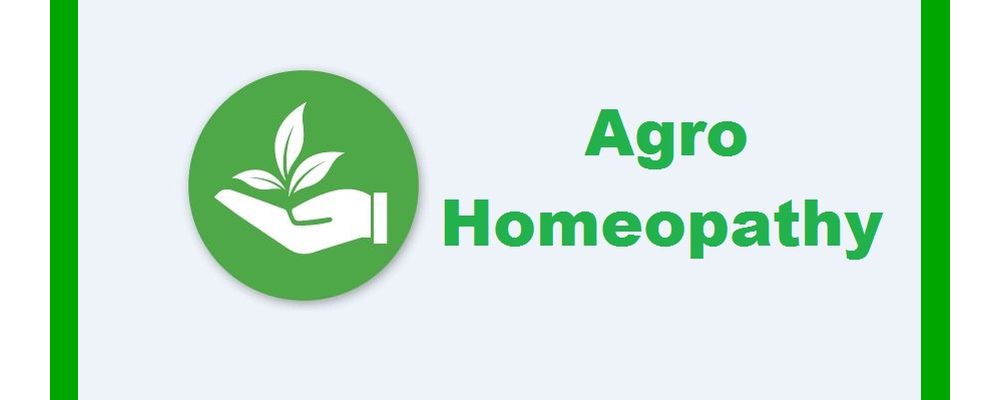
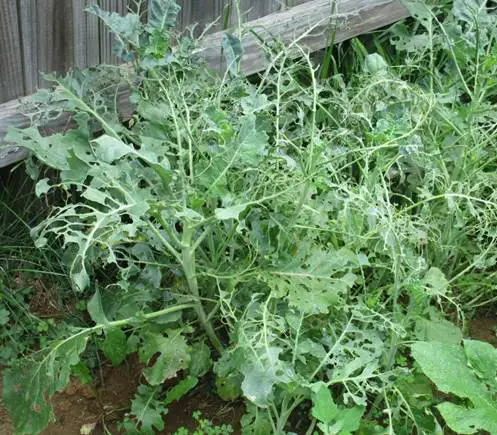
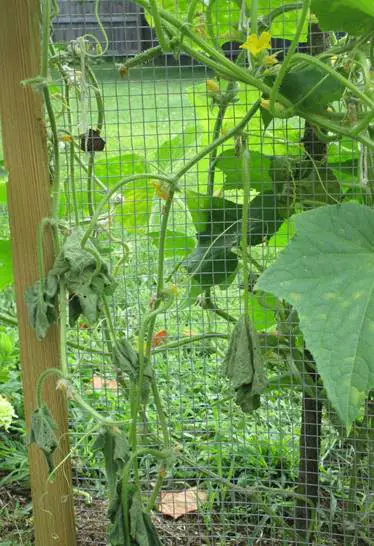
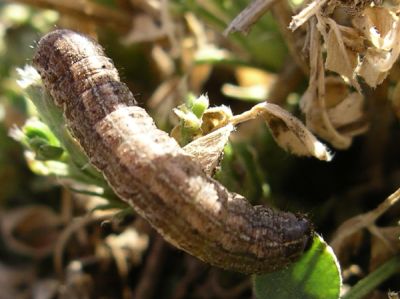
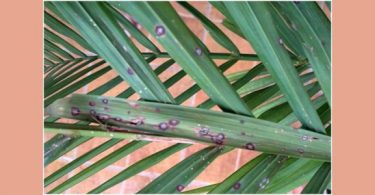
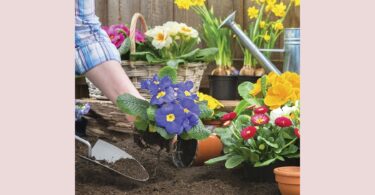

Please advise. On our bitter gourd , opu/bottle gourd and acorn squash plenty of male blossoms and not many female blossoms.
On our night jasmine no blooms and it is already Sept. though the plant is healthy looking.